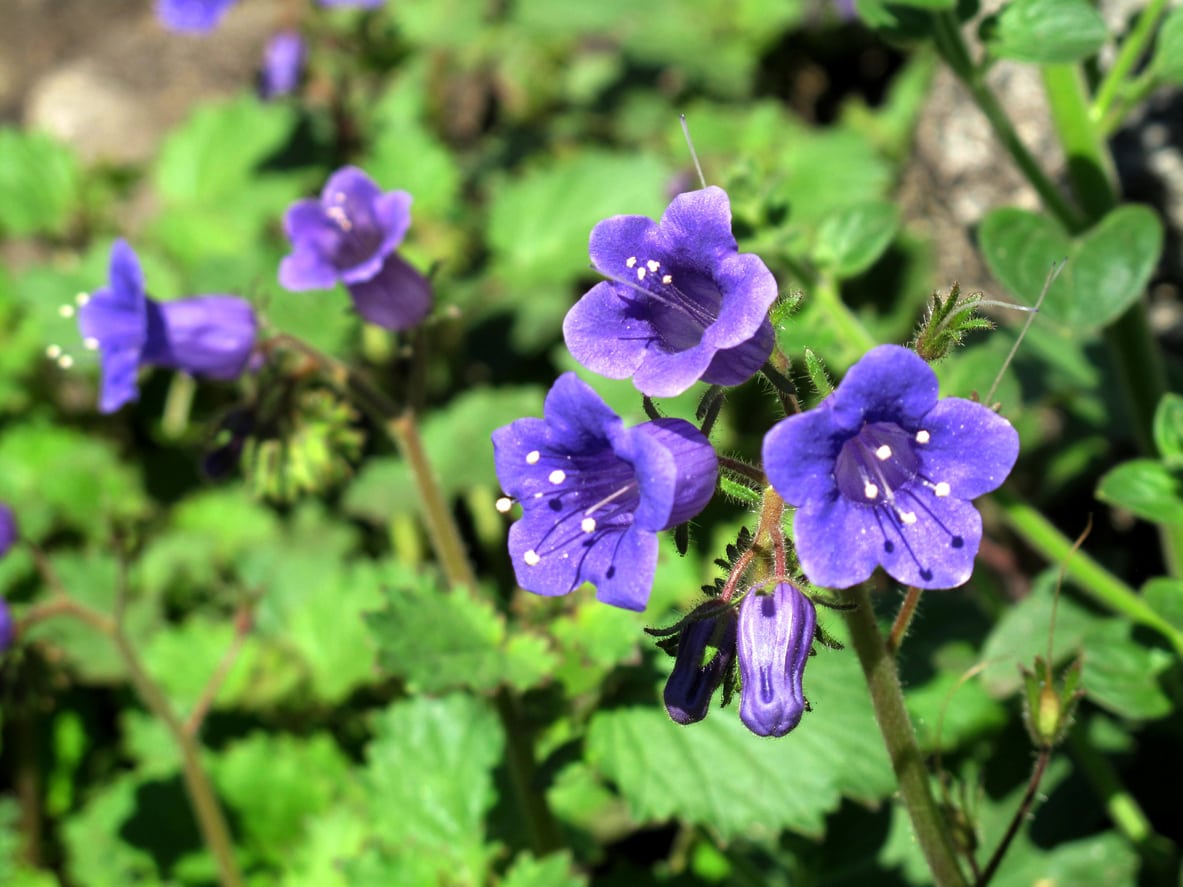Desert Bluebell Care: Tips For Growing Desert Bluebell Flowers


Look for desert bluebells in California’s Mohave Desert. If you hit the timing right, you may see what looks like an ocean of flowers erupting into a stupendous show. Desert bluebell flowers are also bright and beautiful in the home garden setting. For more information about desert bluebell flowers, read on.
What are Desert Bluebells?
So exactly what are desert bluebells? With the scientific name of Phacelia campanularia ssp. vasiformis, these plants are native annual herbs that like sun and dry soil. The plants themselves are stiff and erect. If you start growing desert bluebells, you’ll find that the oval leaves are rounded and covered with fine hairs. Desert bluebell flowers are large, bell-shaped, and a vivid shade of blue. They have yellow anthers that protrude from the bell of the petals.
How to Grow a Desert Bluebell
Desert bluebells grow naturally in deserts in southern California. Sometimes they flower en masse after a wet winter, with thousands of them forming masses of sapphire blue. If you’d like to see that gorgeous blue color in your own garden, you may want to know how to grow a desert bluebell. First, check your hardiness zone. Desert bluebell care is easiest if you plant the flowers in USDA plant hardiness zones 9 through 10. Site these beauties in a full sun location. They need well-draining soil, either coarse or sandy. Act in late summer or early fall, sprinkling seeds on top of the soil to give them the light they require to grow. Before you start growing desert bluebells, you’ll want to know their mature size. They can get to 24 inches (61 cm.) tall and 18 inches (46 cm.) wide. Flowers appear in February and March and last about a month.
Desert Bluebell Care
Second to the indigo color of the flowers, the best thing about these plants is the ease of desert bluebell care. Remember that these are natives, and native plants know how to fend for themselves. For example, once the plants are established, don’t irrigate them. They will make do with whatever water is available. Ditto with fertilizer. Don’t use any.
Sign up for the Gardening Know How newsletter today and receive a free copy of our e-book "How to Grow Delicious Tomatoes".

Teo Spengler is a master gardener and a docent at the San Francisco Botanical Garden, where she hosts public tours. She has studied horticulture and written about nature, trees, plants, and gardening for more than two decades, following a career as an attorney and legal writer. Her extended family includes some 30 houseplants and hundreds of outdoor plants, including 250 trees, which are her main passion. Spengler currently splits her life between San Francisco and the French Basque Country, though she was raised in Alaska, giving her experience of gardening in a range of climates.